Ha Long Bay Shore Excursion that Avoids the Crowds
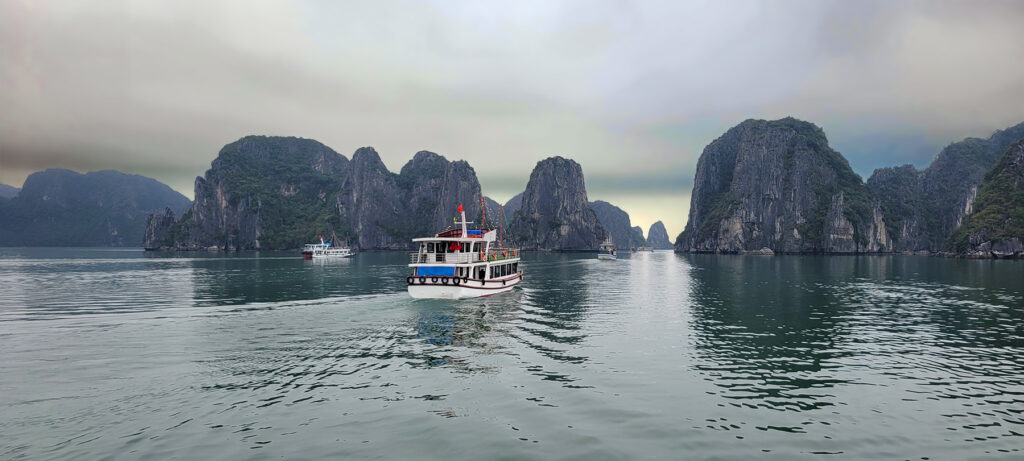
Ha Long Bay has been on my bucket list for quite some time. This was the first tour I booked after making the cruise reservations, and my primary objective was to appreciate the unique rock formations in the bay. From the photos, Ha Long Bay seemed like a magical place that could be peaceful under the right circumstances. Unfortunately, the bay has become a popular tourist destination so I wasn’t sure I’d be able to see it without crowds of people. In order to increase my chances, instead of getting on a group tour boat, I opted to book a private tour through Tours by Locals. I couldn’t have been happier with my choice; I was able to enjoy the bay in all its glory! But allow me to start at the beginning of the shore excursion.
The plan was for our tour guide to pick up Me, Mark, and our nephew, Will, at the port gate. Unfortunately Mark had a bad head cold and decided not to join us. I felt very bad for him; I wouldn’t have missed seeing Ha Long Bay even if I had to be carried on a stretcher! Anyway, our guide, “Steve”, arranged our tour so that we wouldn’t get to our boat until the afternoon. He said that the mornings were the busiest times on the bay. A typical tour included a tour of Ha Long city, but I opted to see more of the countryside instead. Our first stop was to Yen Duc village. Steve (his name was really Hoang) said it was a typical newer Vietnamese village.
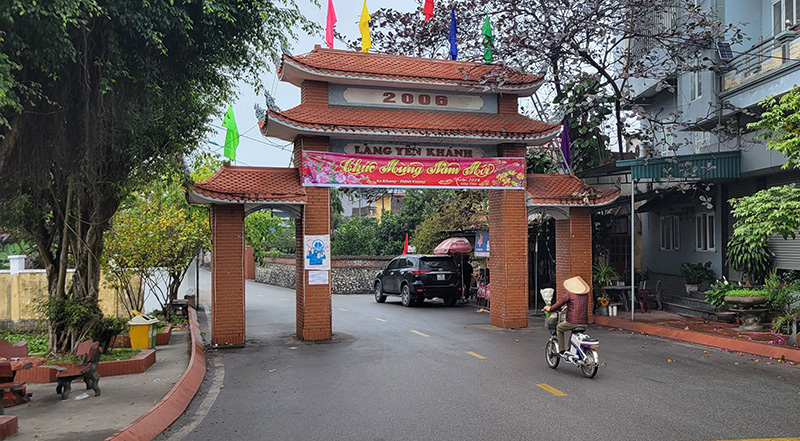
Our first stop in the village was to walk along a narrow road that ran through rice fields. We stopped to watch the women working in the mud. The woman in the photo below is planting young rice plants. This is clearly dirty, back-breaking work.
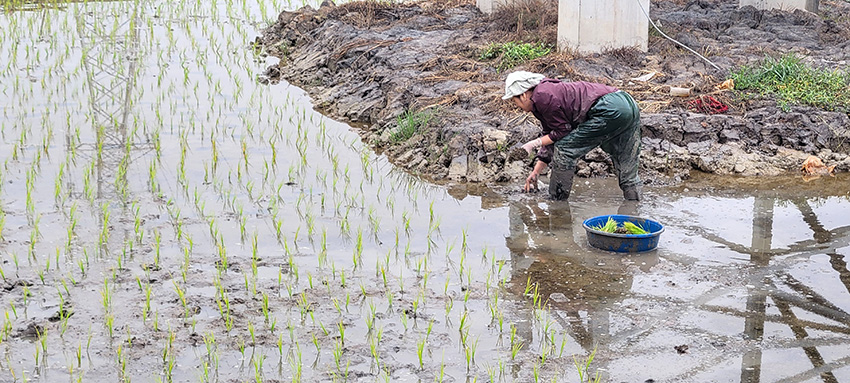
The woman in this photo is pulling up plants that were damaged by the cold weather.
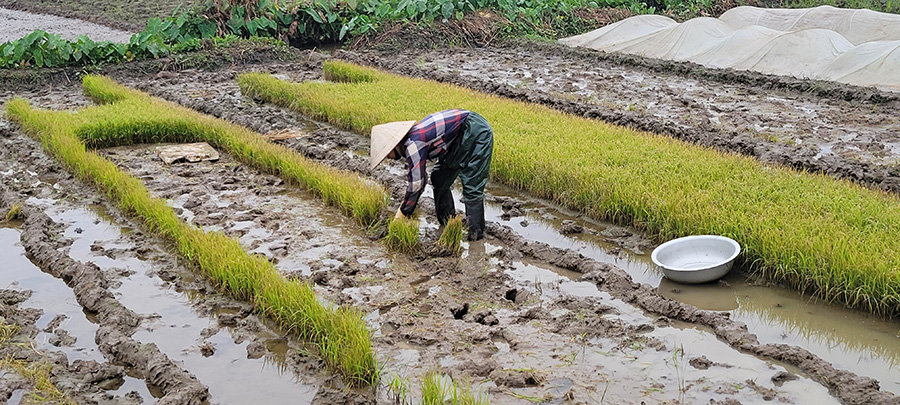
Scooters are the primary mode of transportation here. It appears to be how all of the workers get to the rice fields.
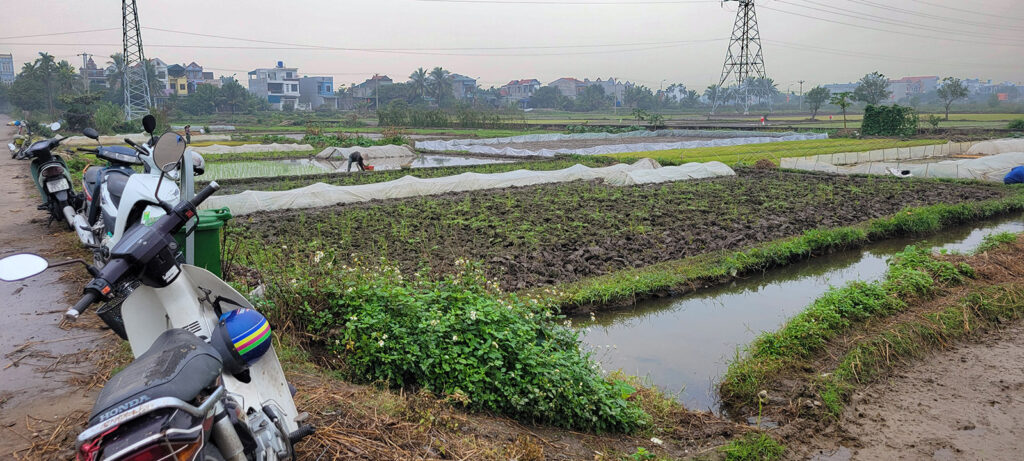
After the rice fields we walked across the street to a neighborhood. The homes here seemed rather large and nice with a front gate and a paved or tiled front “yard”. We noticed that most of the homes we passed had glass shards stuck on top of their courtyard walls. I asked Steve about this and he said it was to keep the children from climbing up the walls and picking the fruit. But I am a little skeptical of that explanation given many of the homes didn’t have fruit trees in their front yard. I’m not sure where the more modest homes were hidden.
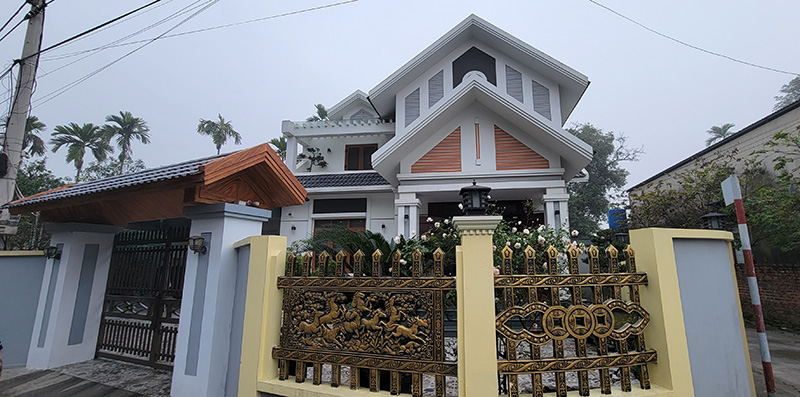
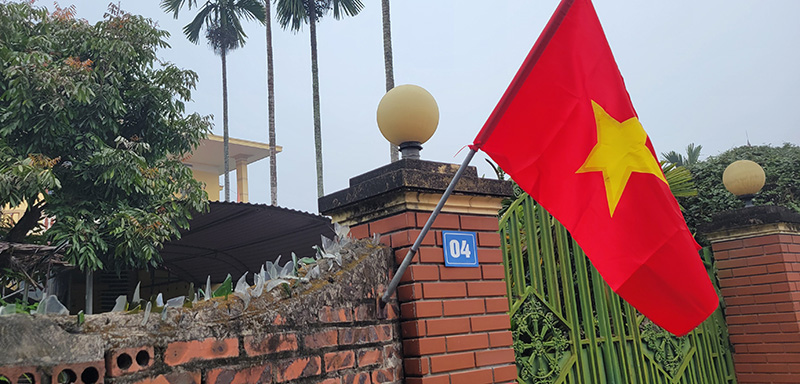
We continued to walk through the streets until we came to the village’s temple. The complex of buildings and gardens were very pretty and peaceful.
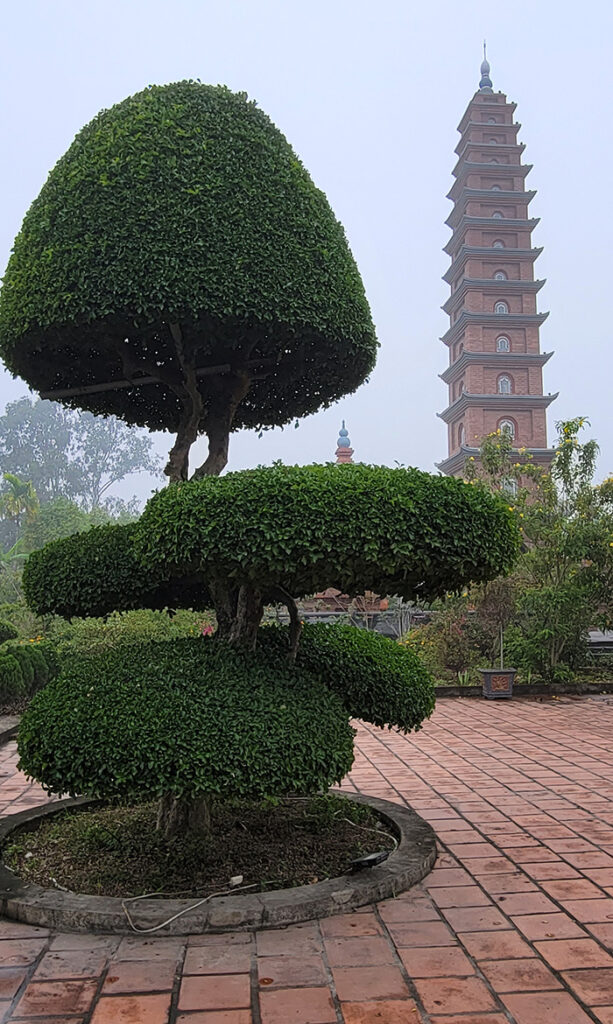
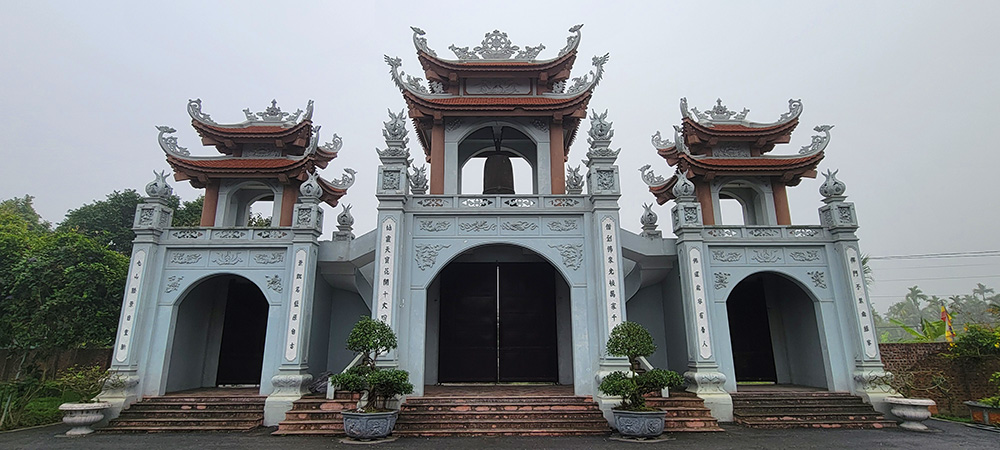
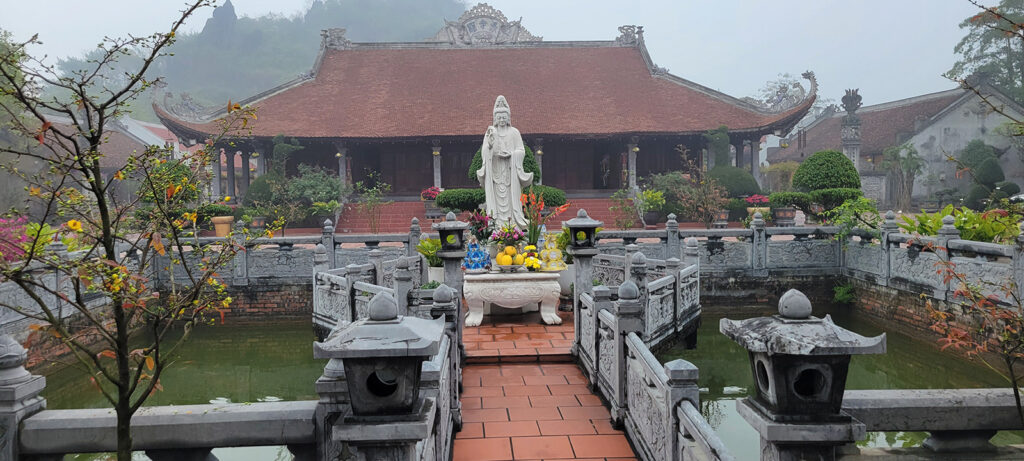
On our way to the village we had passed by a cemetery and I asked our guide if we could stop there on the way back; he kindly obliged. I always try to visit a cemetery when traveling to a new country. I think it’s very interesting how different countries honor their dead in different ways. The section of the cemetery we visited was fairly new. The tombstones were mostly made out of marble, and I found it odd that the ground in between the tombs was concrete instead of grass. But the most interesting part of the stop was Steve’s telling of a Vietnamese tradition. Apparently, they bury their dead in a regular coffin and then after the appropriate time has passed for the body to decompose, the family holds a midnight ceremony where they raise the coffin. He said that they remove the bones, wash them and then put them in a smaller coffin and bury them in their final resting place.
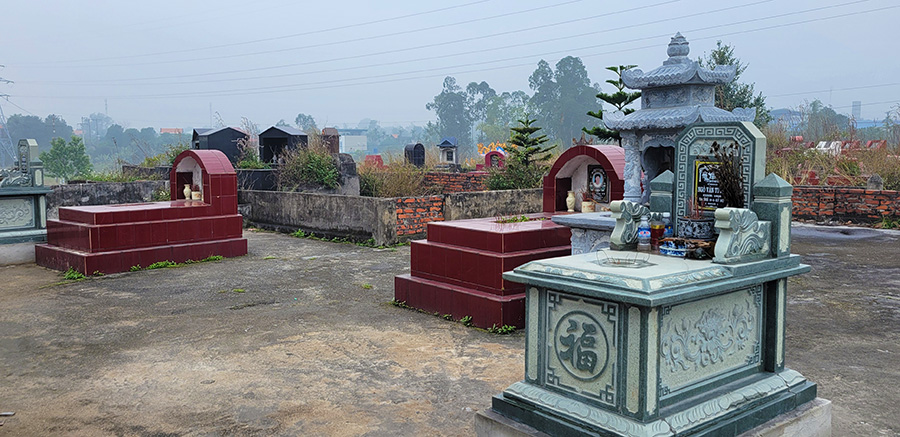
We made one more stop before heading to our boat in Ha Long Bay. We visited a place where saltwater pearls are farmed and processed. It was quite interesting. They use a Japanese technique to get perfectly round pearls. It involves taking imperfect pearls and grinding them down to make tiny round pearls, they then implant those pearls into other oysters to create a larger round pearl. I didn’t completely understand the process involved with preparing the tiny pearl to be implanted, but it involved the use of other parts of the donor oyster (first photo). Once the tiny pearl is implanted into a particular part of the live oyster (second photo), it is put back onto a rack (third photo) and placed back into the bay. We were told there is only about a 30% success rate in getting a round pearl from this tedious process.
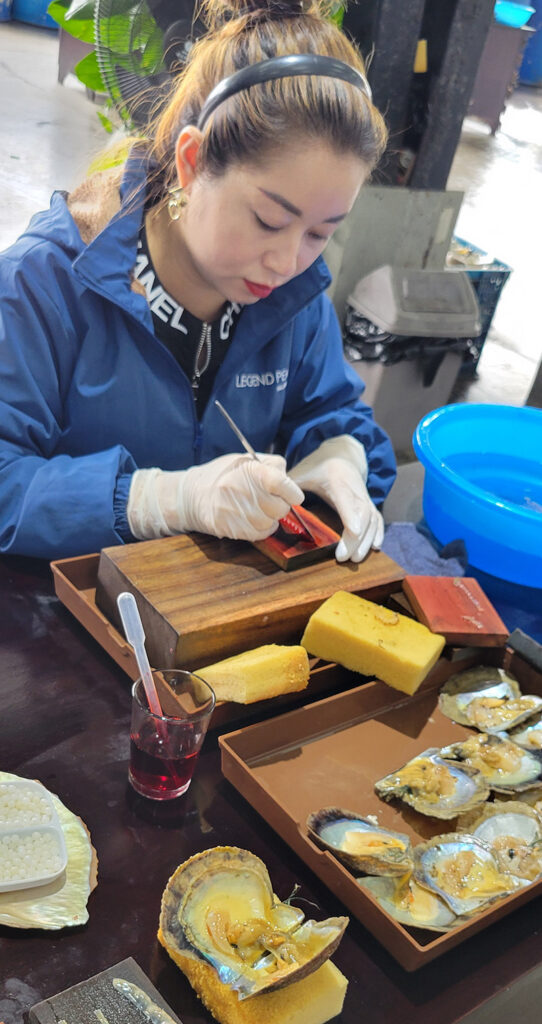
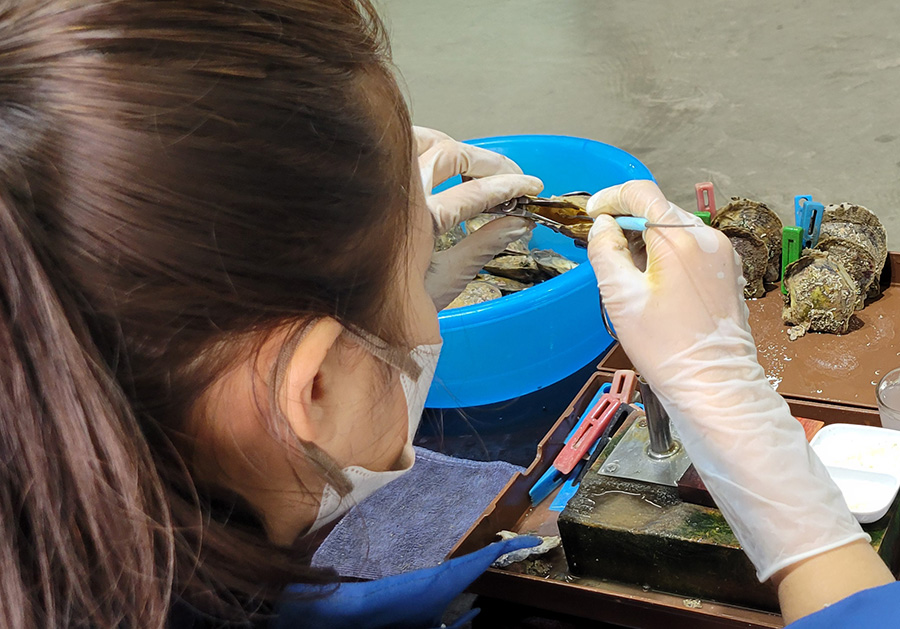
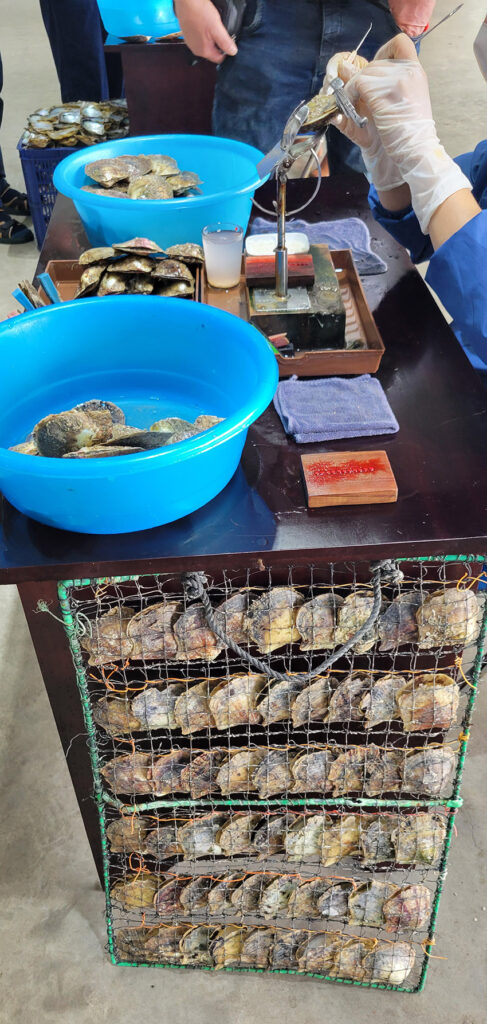
After the tour we were ushered into a huge jewelry showroom. I had no intention of buying anything, but I caved and bought myself a necklace. It caught my eye and the idea of having pearls harvested from Ha Long Bay really appealed to me. After spending too much money, we headed to the main event of the day – our cruise of Ha Long Bay!
I knew we were going to have a private boat and a seafood lunch, but both Will and I imagined a small motor boat and a picnic style lunch. So we were a little taken aback when we were shown to our tour boat that was large enough for 48 passengers and had a full kitchen onboard!
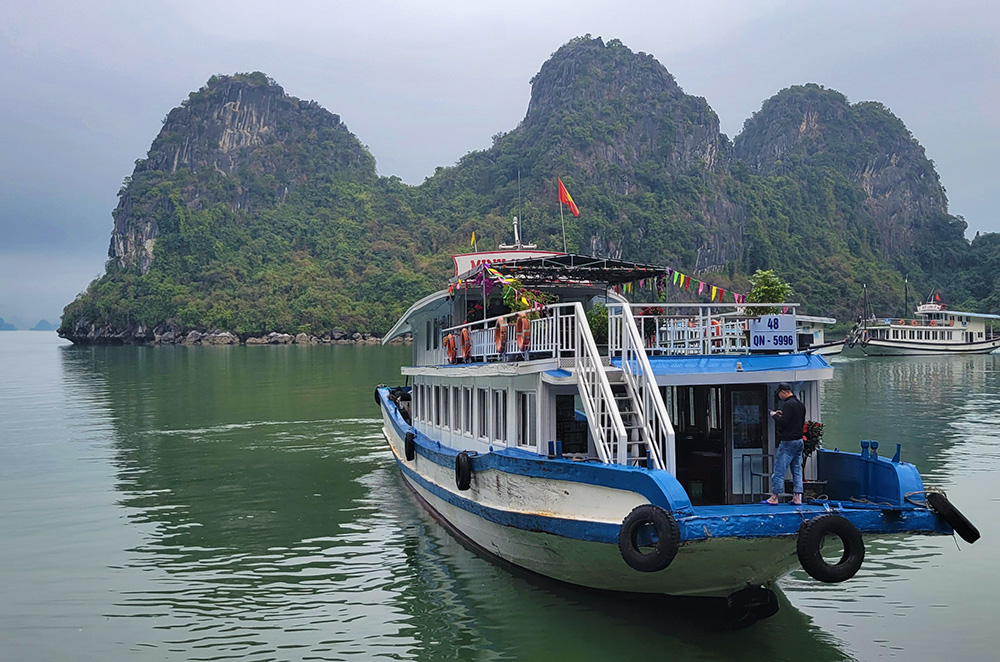
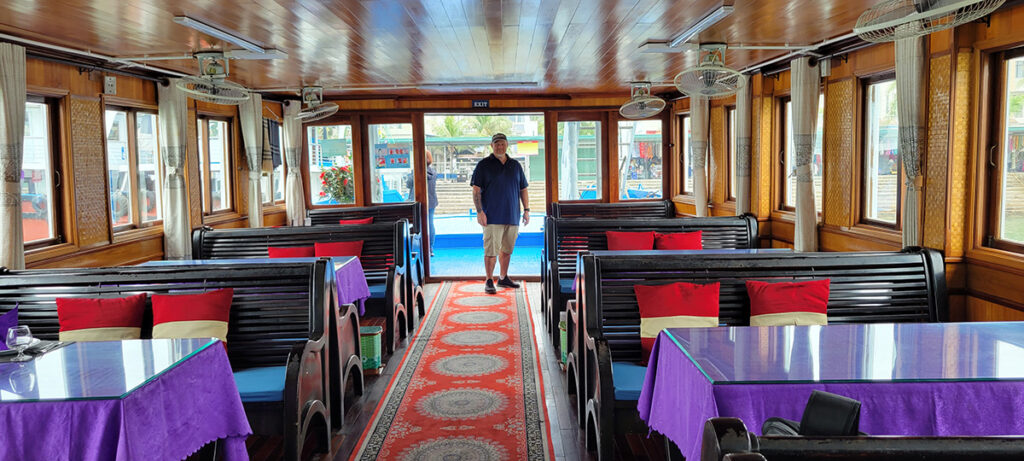
Around 10 minutes after we boarded they started bringing out the food. And it kept coming and coming until there were 10 different dishes. I had a difficult time eating because I couldn’t stop looking at (and photographing) the scenery.
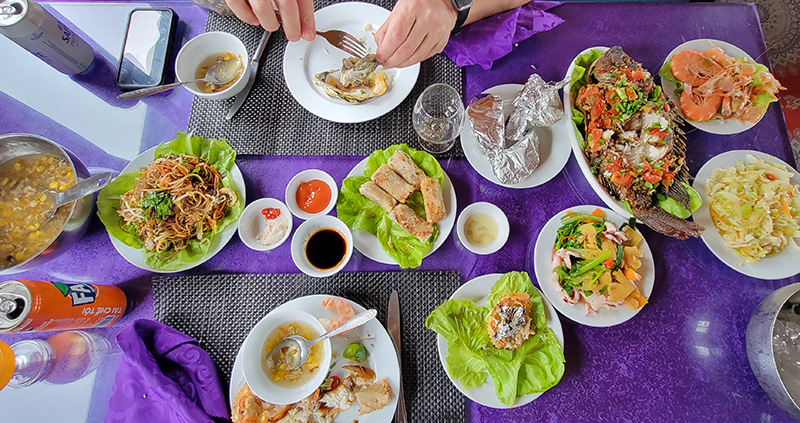
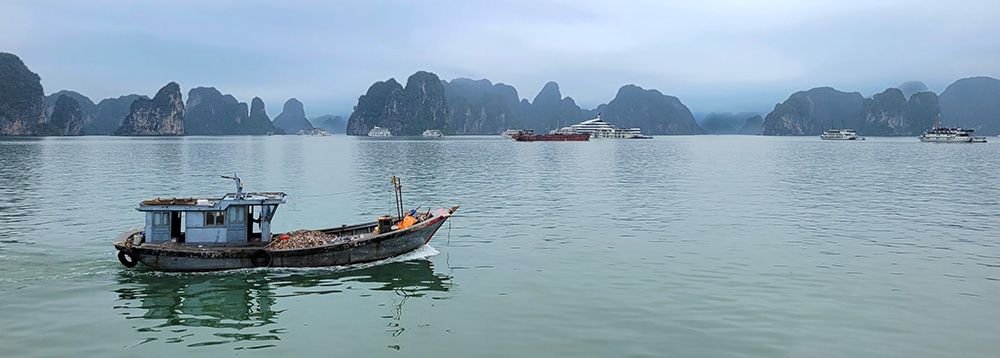
As we were traveling through the bay, our guide pointed out some of the more famous rock formations. One of them is found on the back of their 200,000 bill. (That equals about $9US.)
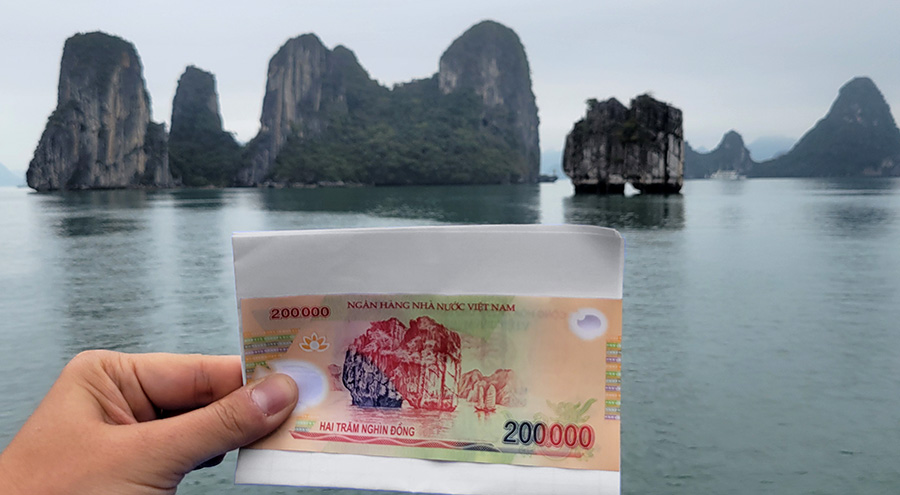
Another famous rock formation is called the Rooster and the Hen, but our guide liked to call it the “kissing chickens”. I just don’t see it.
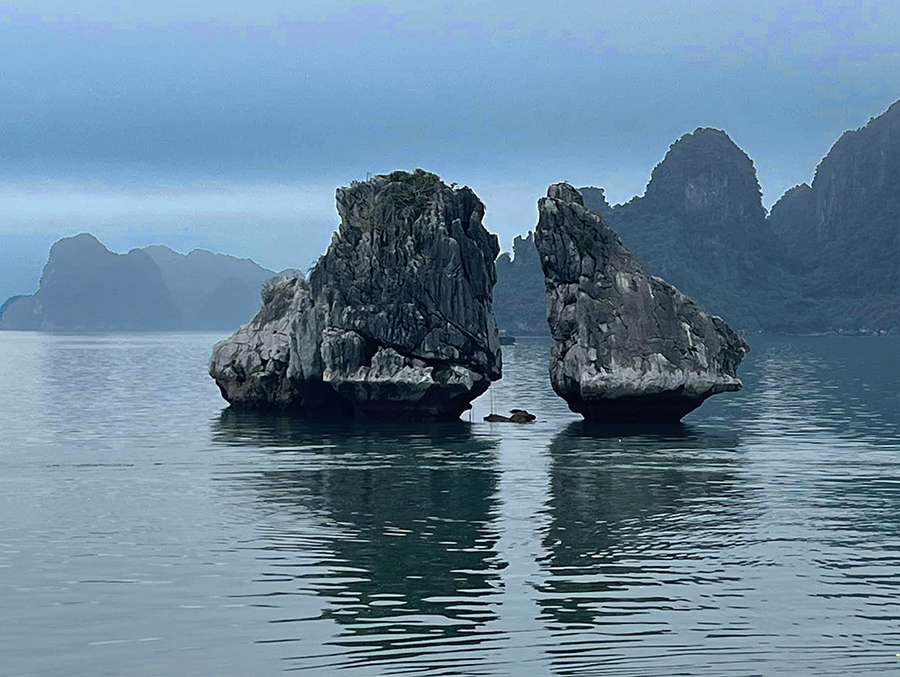
It didn’t take long for us to arrive at our first destination – a floating village. Well, that is what our guide called it. At one time it was quite large and many fisherman lived there. But when tourism became very prevalent in the bay, the government relocated the fisherman. The “floating village” is now just a base from which to get into a kayak or row boat, along with a store. Will and I opted to take the easy route and had a very friendly Vietnamese women row us around.
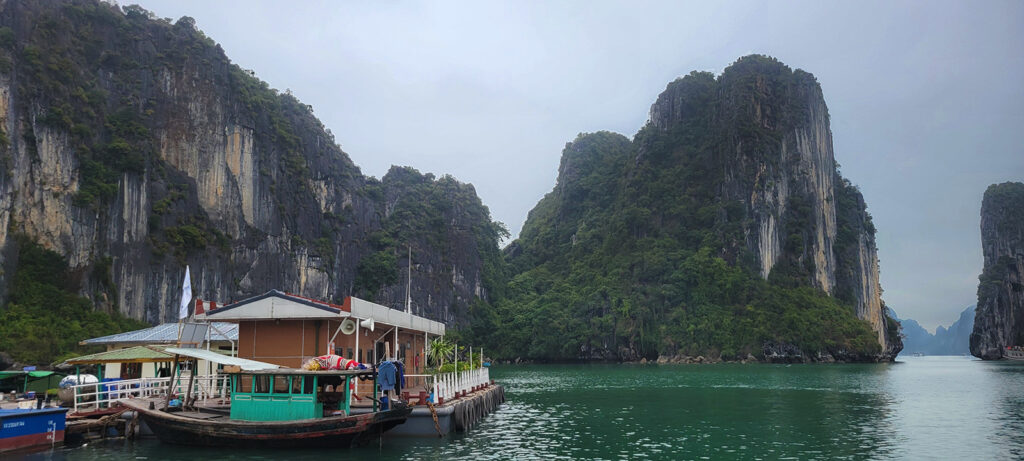
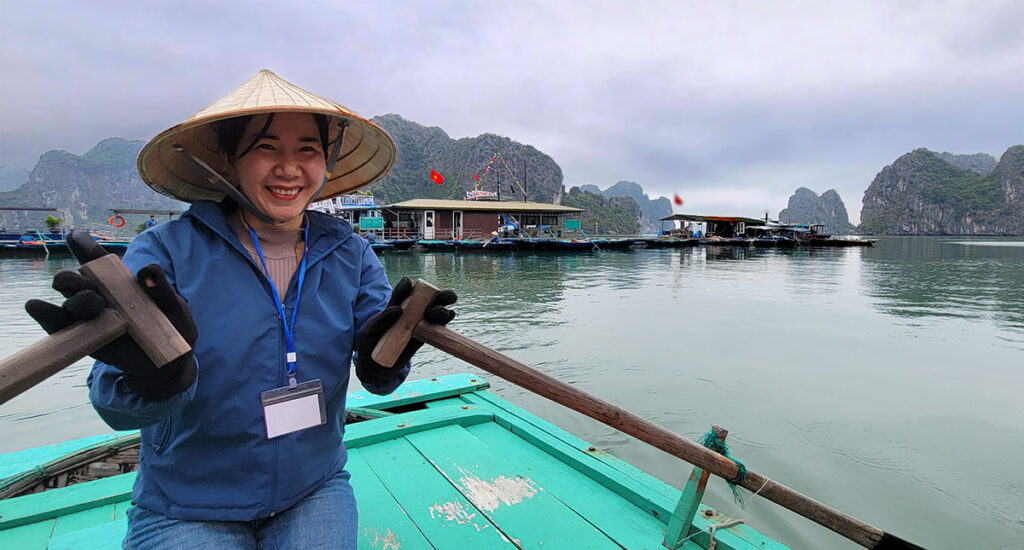
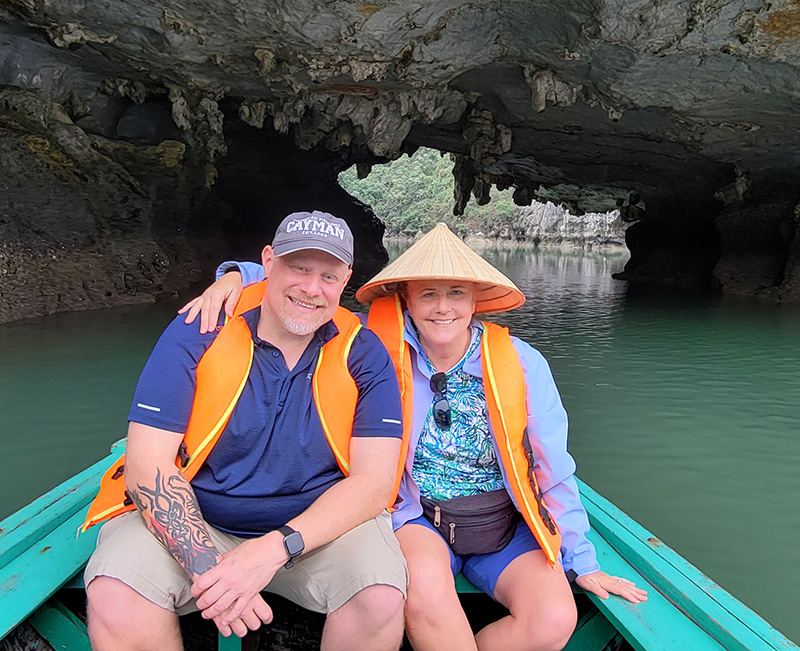
She rowed us into an opening in the rocks and that lead to a pool of water completely surrounded by tall rock formations. We were told that this is where the fisherman go with their boats to get protection from the wind during a typhoon.
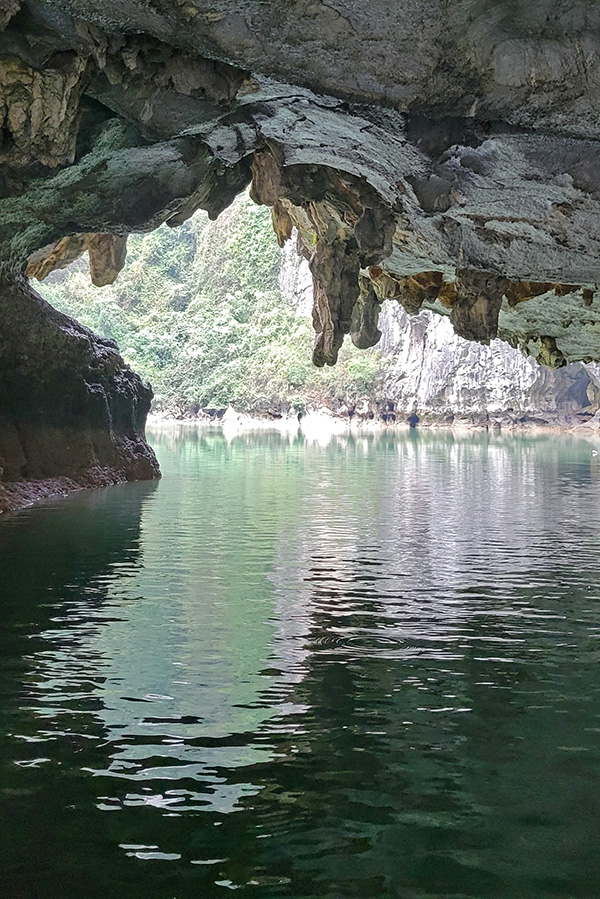
We felt so fortunate that we had this beautiful, peaceful place to ourselves. It wasn’t until we were leaving that other row boats started coming in.
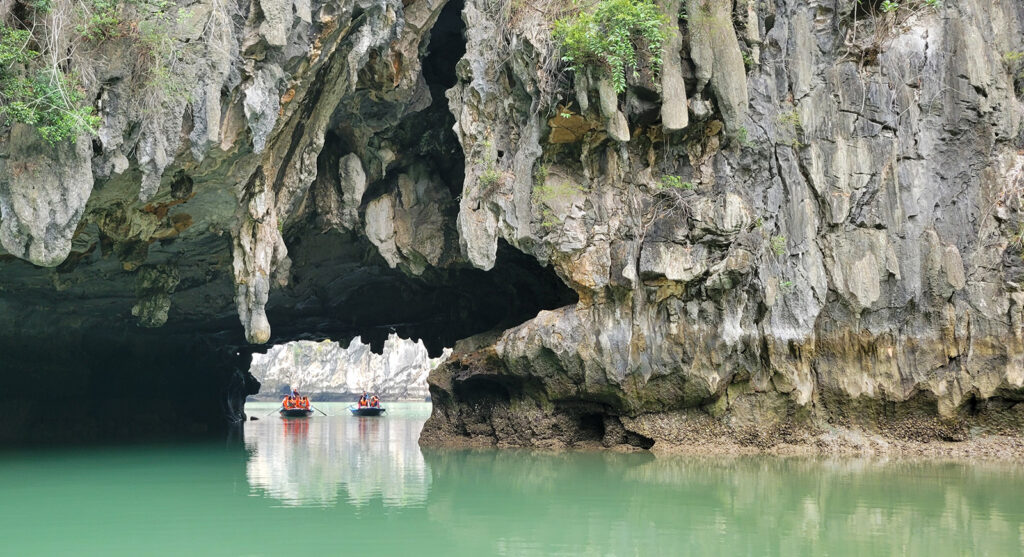
After leaving that protected area we were rowed a little ways into the opening of another rock formation. This entrance was shaped like the bat cave and the area on the other side wasn’t enclosed.
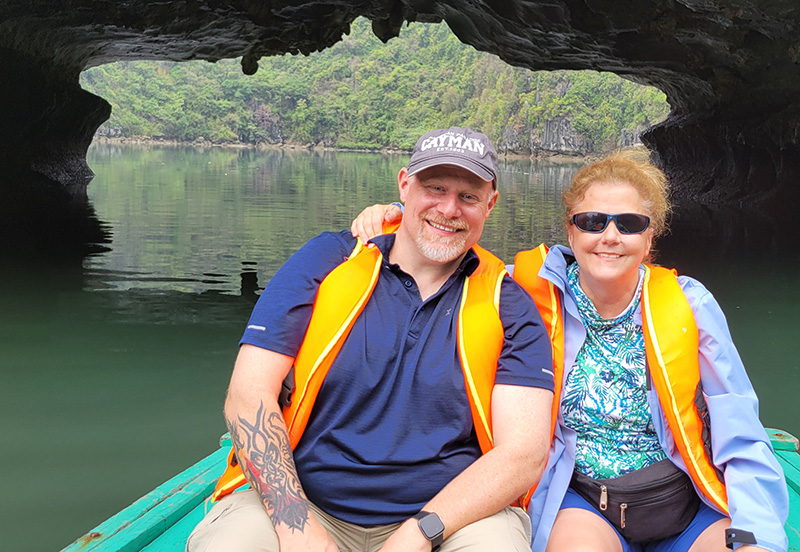
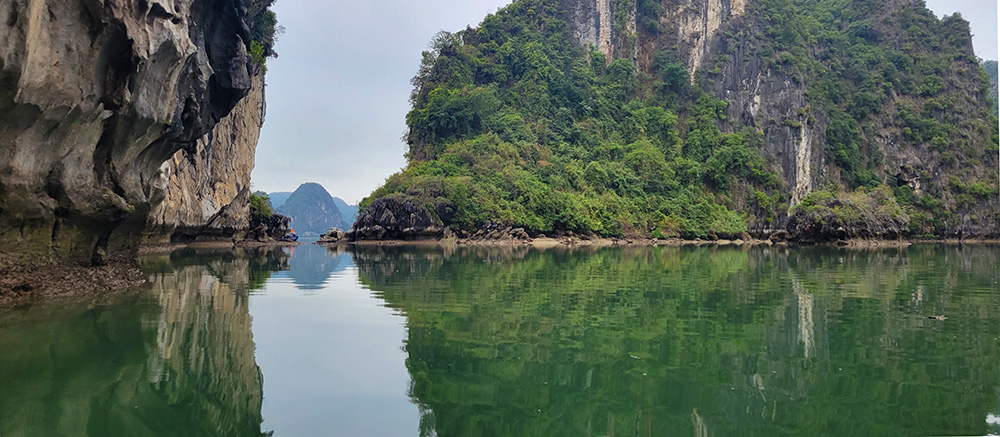
Can you see the cat in the photo below?
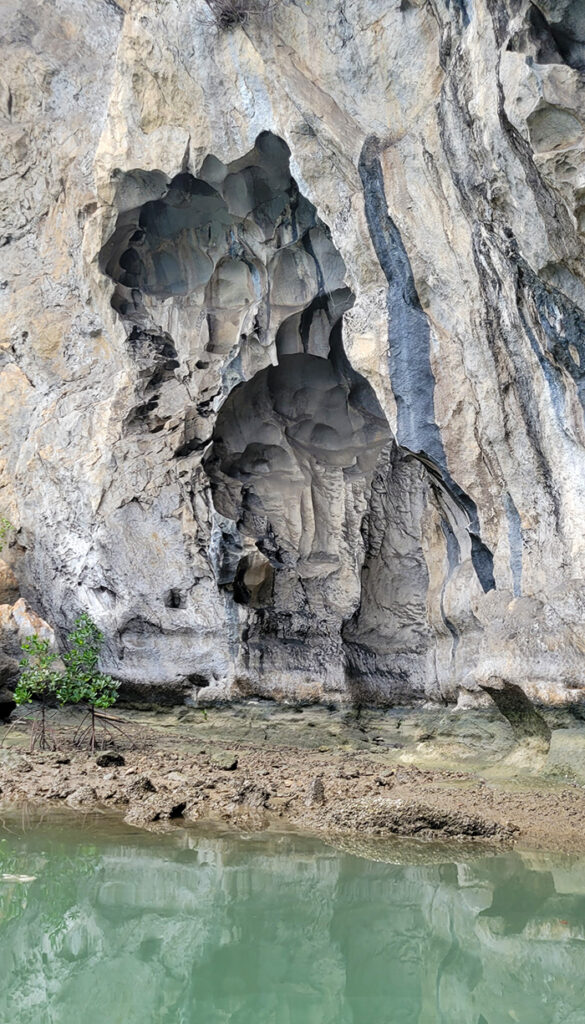
Again we were fortunate to be able to enjoy the quiet and solitude. Next we headed back to the floating village to rejoin our boat.
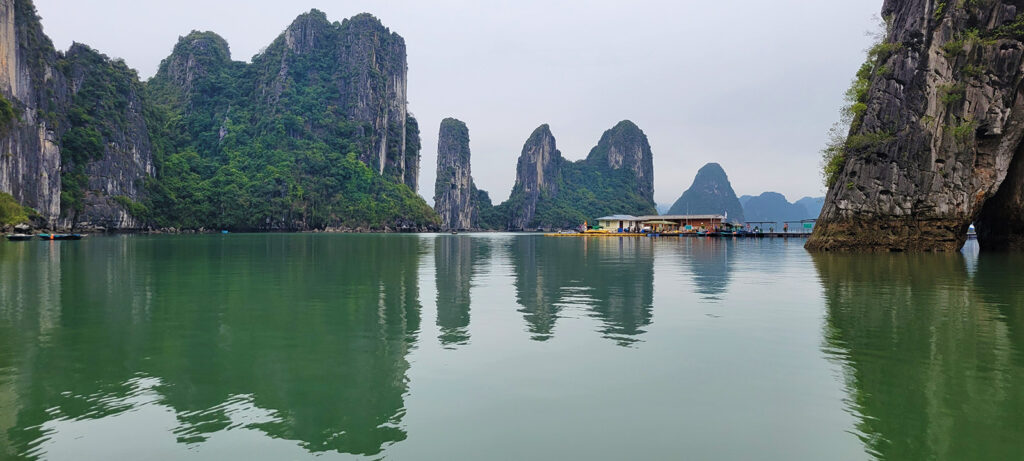
Back on our boat, we sailed past more beautiful, peaceful scenery as we headed to our next destination – caves.
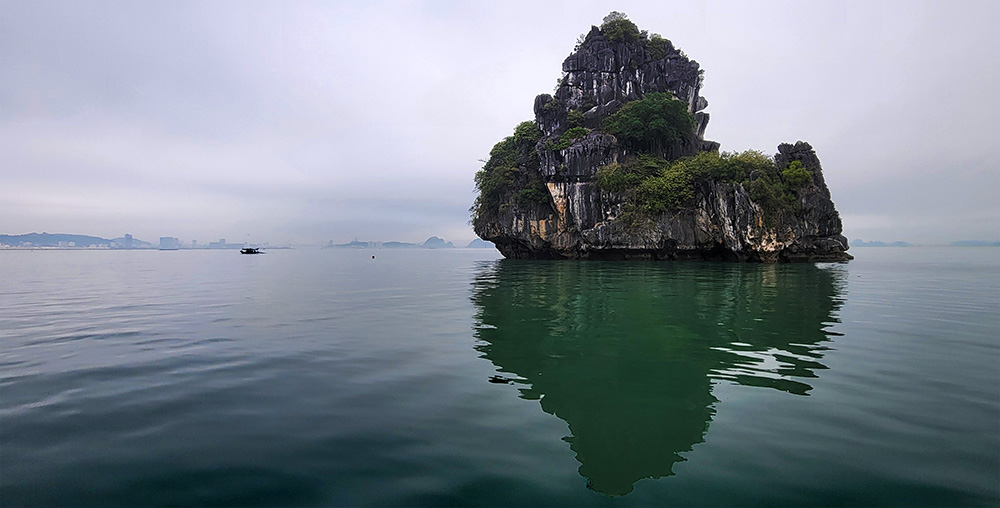
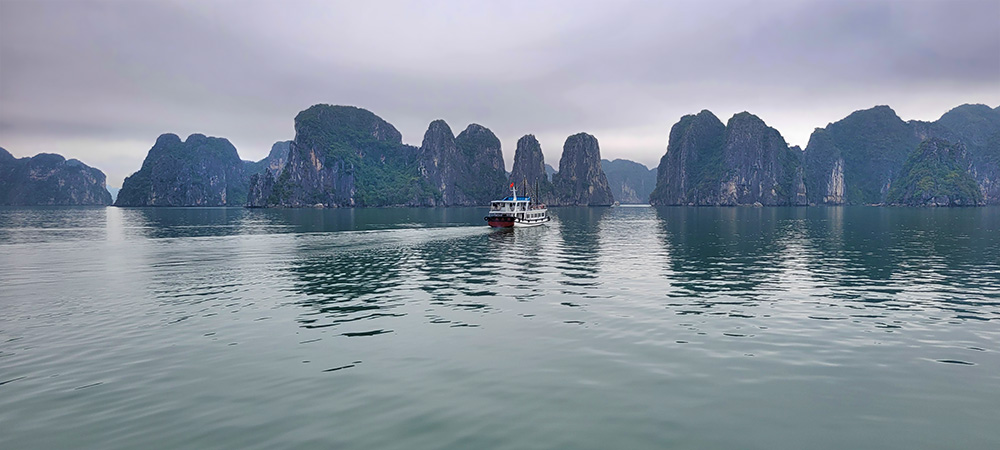
I knew that our tour included caves, but I really didn’t know what to expect. For some reason I had the idea that we’d be taking the rowboat through some small caves. So, both Will and I were surprised, and in awe, when we docked and were walked into a cave that rivals the magnificence of Carlsbad Caverns in the U.S. It’s name is Heavenly Palace Cave (Hang Thien Cung in Vietnamese). It was really hard to capture the essence of it in a photograph. Some of the stalactites and stalagmites were incredibly massive. Our guide said that they were estimated to be as old as the rock formations in the bay which are approximately 500 million years old. I thought the ceilings were very cool with their white, circular indentations that looked like puffy clouds in the sky. In the photo below, can you spot the “window” into the next room?
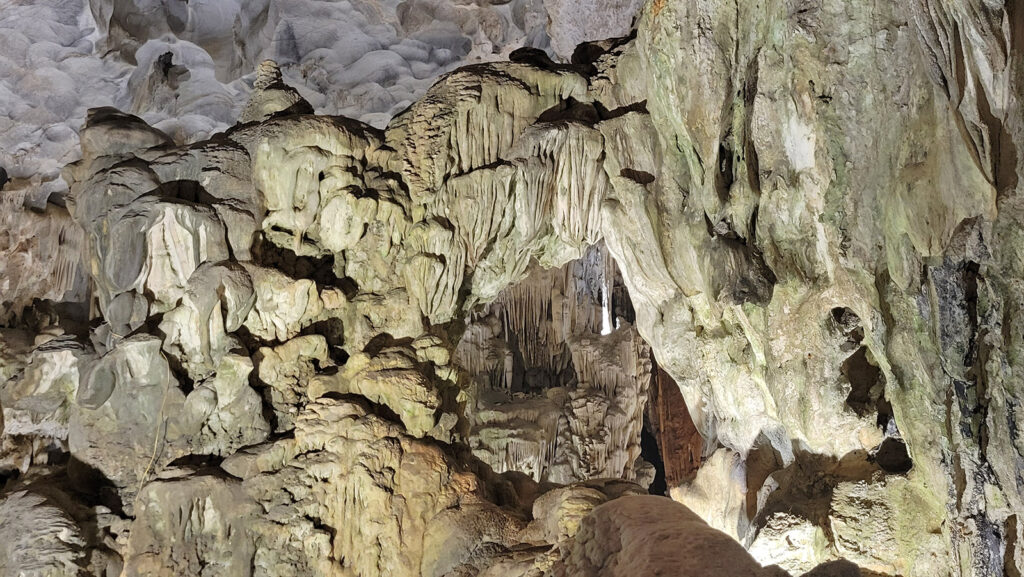
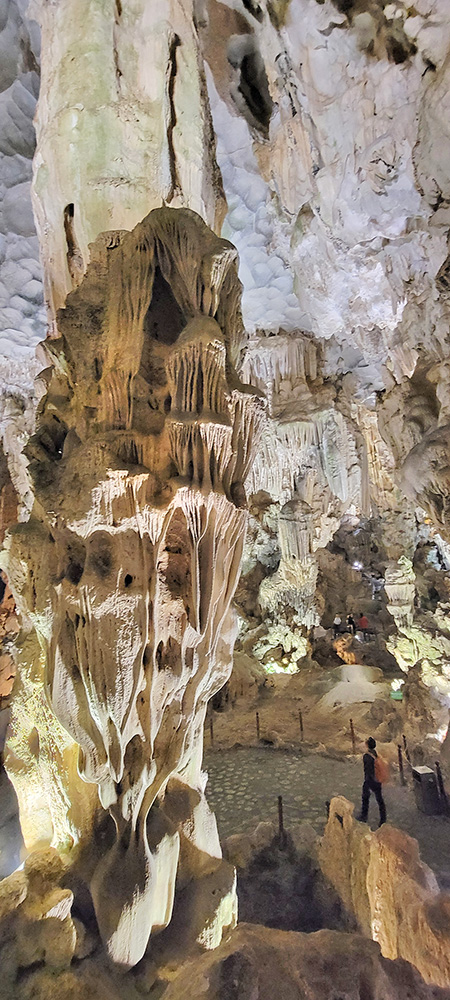
After we exited the first cave we could see the boats docked below. At that point there were quite a few tour boats there, but still we saw very few people. I think we managed to stay just a few minutes ahead of them.
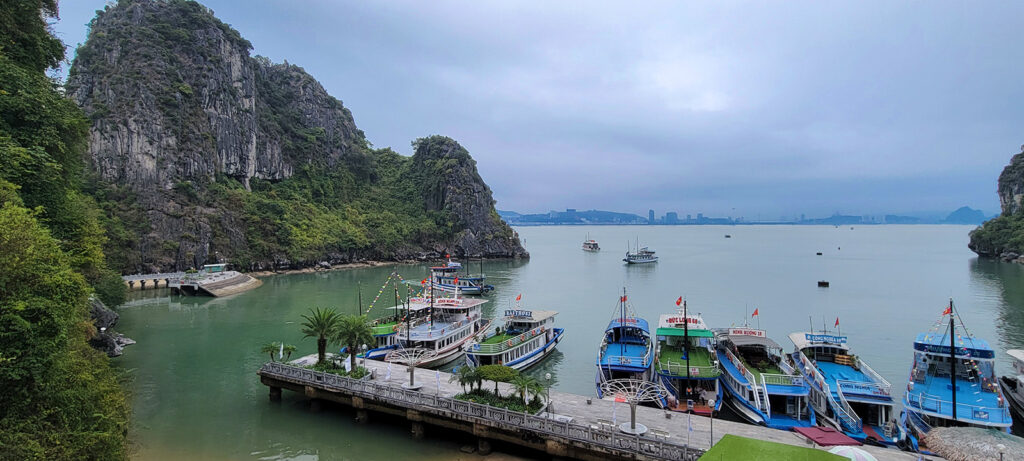
From there we walked a short distance into another cave called Ba Hang. This one was also very impressive but smaller than the first one and it had a much larger entrance which let in a lot of natural light.
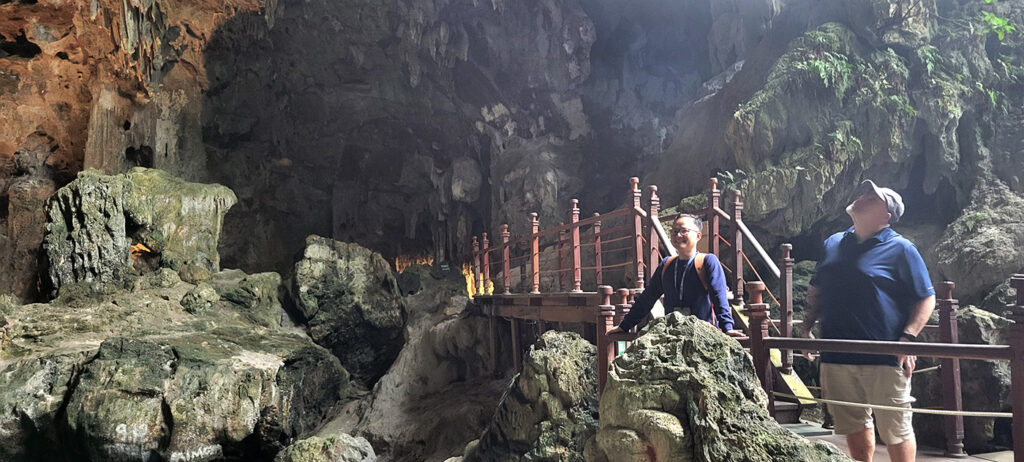
The second cave was the last stop on our cruise tour. We enjoyed the ride back to the harbor from the top deck of our boat. Then from the harbor we were driven back to our cruise ship, the m.s. Westerdam.
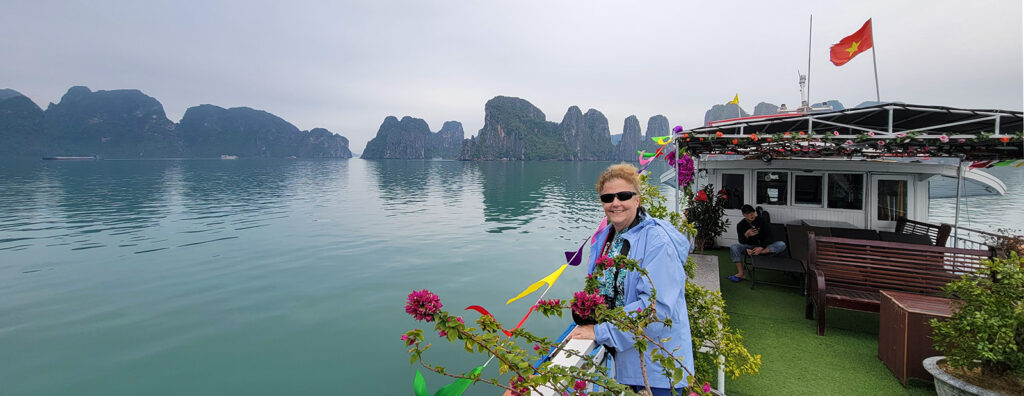
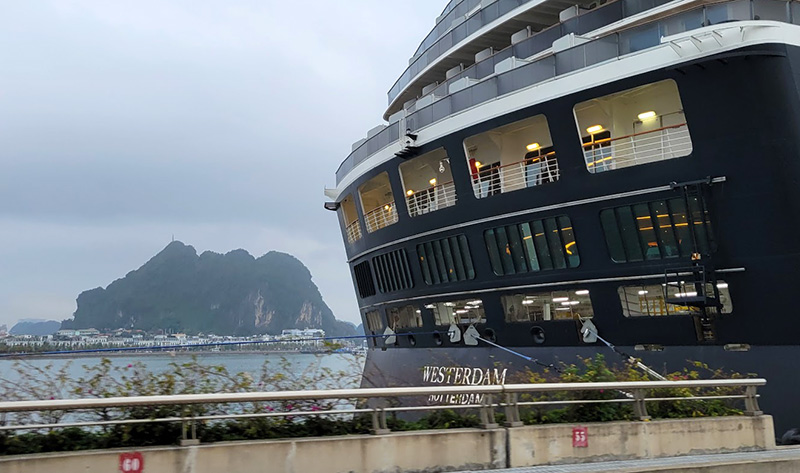
That night onboard our cruise ship we had a nice view from our balcony. I’m so happy to have had the opportunity to visit this magical place and check it off my bucket list!
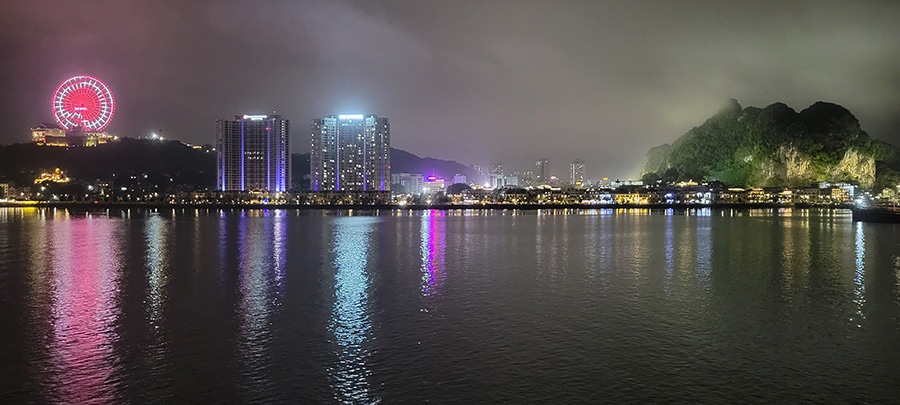
My Impressions of the Ha Long Bay Area and our Excursion
Despite dreary weather, the visit to Ha Long Bay was one of the highlights of my 28-night cruise. The two biggest pleasant surprises of the day were 1) being able to enjoy the bay without crowds of people, and 2) the magnificent caves! And despite spending too much money, I’ll also glad we went to the pearl farm; it was really interesting. The visit to Yen Duc village was okay, but I would have been happy to skip it. I realized after-the-fact that a lot of tours visit this particular village. So even though there isn’t much there, it’s almost like this village is maintained to be what the Vietnamese want us to think is a typical village. This might explain why the locals were overly friendly. Everyone, including workers in the street, were sure to smile, wave and say “hello” to us. One other thing I found amusing was that a lot of the Vietnamese people, especially the tour guides waiting to pick up people at the port in the morning, were bundled up in heavy winter coats. Will and I were wearing shorts – the temperature was in the upper 60’s and low 70’s!